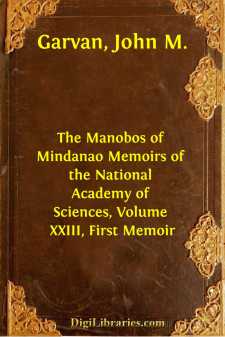Categories
- Antiques & Collectibles 13
- Architecture 36
- Art 48
- Bibles 22
- Biography & Autobiography 813
- Body, Mind & Spirit 142
- Business & Economics 28
- Children's Books 17
- Children's Fiction 14
- Computers 4
- Cooking 94
- Crafts & Hobbies 4
- Drama 346
- Education 46
- Family & Relationships 57
- Fiction 11829
- Games 19
- Gardening 17
- Health & Fitness 34
- History 1377
- House & Home 1
- Humor 147
- Juvenile Fiction 1873
- Juvenile Nonfiction 202
- Language Arts & Disciplines 88
- Law 16
- Literary Collections 686
- Literary Criticism 179
- Mathematics 13
- Medical 41
- Music 40
- Nature 179
- Non-Classifiable 1768
- Performing Arts 7
- Periodicals 1453
- Philosophy 64
- Photography 2
- Poetry 896
- Political Science 203
- Psychology 42
- Reference 154
- Religion 513
- Science 126
- Self-Help 84
- Social Science 81
- Sports & Recreation 34
- Study Aids 3
- Technology & Engineering 59
- Transportation 23
- Travel 463
- True Crime 29
The Manobos of Mindanao Memoirs of the National Academy of Sciences, Volume XXIII, First Memoir
by: John M. Garvan
Categories:
Description:
Excerpt
CHAPTER I
EXPLANATION OF TERMS
"EASTERN MINDANÁO"
Throughout this monograph I have used the term "eastern Mindanáo" to include that part of Mindanáo that is east of the central Cordillera as far south as the headwaters of the River Libagánon, east of the River Tágum and its influent the Libagánon, and east of the gulf of Davao.
THE TERM "TRIBE"
The word "tribe" is used in the sense in which Dean C. Worcester defines and uses it in his article on The non-Christian Tribes of Northern Luzon:
A division of a race composed of an aggregate of individuals of a kind and of a common origin, agreeing among themselves in, and distinguished from their congeners by physical characteristics, dress, and ornaments; the nature of the communities which they form; peculiarities of house architecture; methods of hunting, fishing, and carrying on agriculture; character and importance of manufacture; practices relative to war and the taking of heads of enemies; arms used in warfare; music and dancing, and marriage and burial customs; but not constituting a political unit subject to the control of any single individual nor necessarily speaking the same dialect.
Philip. Journ. Sci., 1: 803, 1906.
PRESENT USE OF THE WORD "MANÓBO"
The word "Manóbo" seems to be a generic name for people of greatly divergent culture, physical type, and language. Thus it is applied to the people that dwell in the mountains of the lower half of Point San Agustin as well as to those people whose habitat is on the southern part of the Sarangani Peninsula. Those, again, that occupy the hinterland of Tuna Bay come under the same designation. So it might seem that the word was originally used to designate the pagan as distinguished from the Mohammedanized people of Mindanáo, much as the name Harafóras or Alfúros was applied by the early writers to the pagans to distinguish them from the Moros.
Tuna Bay is on the southern coast of Mindanáo, about halfway between Sarangani Bay and Parang Bay.
In the Agúsan Valley the term manóbo is used very frequently by Christian and by Christianized peoples, and sometimes by pagans themselves, to denote that the individual in question is still unbaptized, whether he be tribally a Mandáya, a Mañgguáñgan, or of some other group. I have been told by Mandáyas on several occasions that they were still manóbo, that is, still unbaptized.
Then, again, the word is frequently used by those who are really Manóbos as a term of contempt for their fellow tribesmen who live in remoter regions and who are not as well off in a worldly or a culture[sic] way as they are. Thus I have heard Manóbos of the upper Agúsan refer to their fellow-tribesmen of Libagánon as Manóbos, with evident contempt in the voice. I asked them what they themselves were, and in answer was informed that they were Agusánon--that is, upper Agúsan people--not Manóbos.
THE DERIVATION AND ORIGINAL APPLICATION OF THE WORD "MANÓBO"
One of the earliest references that I find to the Manóbos of the Agúsan Valley is in the General History of the Discalced Augustinian Fathers (1661-1699) by Father Pedro de San Francisco de Assis. The author says that "the mountains of that territory are inhabited by a nation of Indians, heathens for the greater part, called Manóbos, a word signifying in that language, as if we should say here, robust or very numerous people." I have so far found no word in the Manóbo dialect that verifies the correctness of the above statement....


